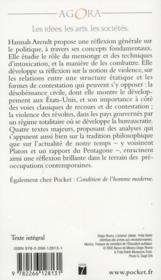

He shows how this freedom, rooted in Jaspers’s phenomenology and a non-metaphysical reading of Kant, serves to redress the world-alienation that was a uniting theme across Arendt’s works.

Josefson then explicates this Moment, what he calls the freedom of the beautiful, as a third face of freedom on par with Arendt’s familiar freedoms of action and the life of the mind. It begins by telling the story of Arendt’s engagement with the Augenblicke of Nietzsche, Kierkegaard, Jaspers, Heidegger, Kafka and Benjamin, in order to identify her own aesthetic Moment. This book addresses this crisis with a model of public reason based in a new aesthetic reading of Hannah Arendt’s political theory. Our quest for a politics that is free, moral and rational has, somehow, made it hard for us to move, to change our positions, to visit places and perspectives that are not our own, and to embrace reality.


 0 kommentar(er)
0 kommentar(er)
